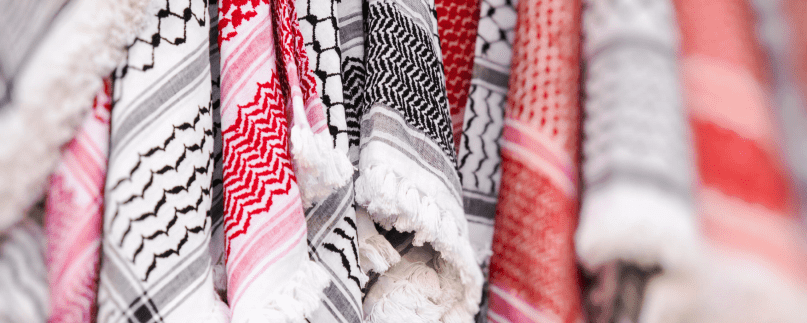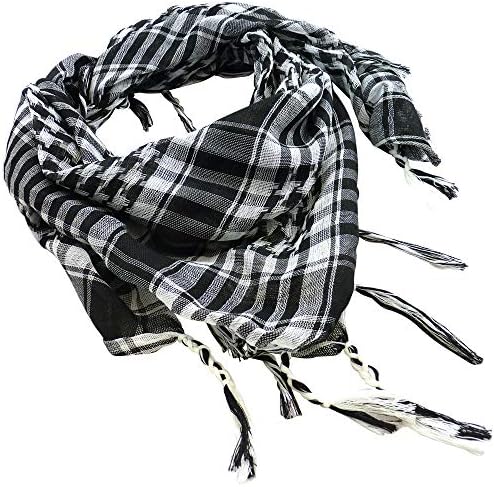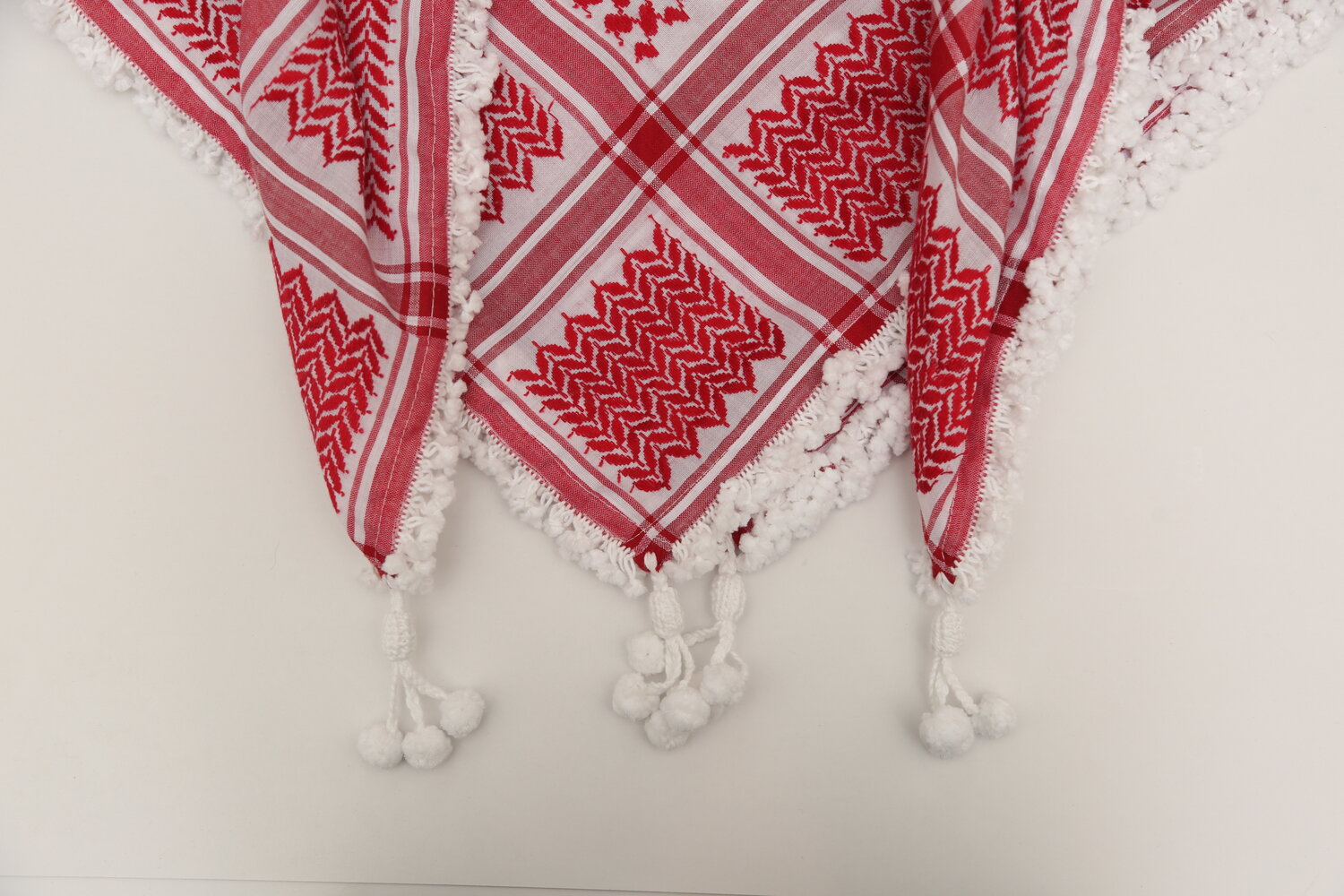
Aya Elgohary
Image via Kaleela
The Arab world possesses a rich textile culture, tradition, and diversity, which is beautifully reflected in the attire worn by its people. Among the most iconic and recognisable articles of clothing are the various types of keffiyehs, or scarves. These garments, both functional and deeply symbolic, have a longstanding history and play a significant role in expressing cultural identity across the region. From the classic Palestinian keffiyeh to the Jordanian shemagh and the Egyptian shemagh of the Sinai, each type of keffiyeh or scarf possesses distinct features, patterns, and significance.
Let’s delve deeper into the captivating world of these diverse head coverings, discovering the unique attributes that set them apart and the cultural narratives they weave throughout the Arab world.
The Palestinian Keffiyeh

The Palestinian keffiyeh is a deeply symbolic and iconic headscarf that holds profound cultural and political significance in the Palestinian territories and beyond. It is instantly recognisable for its classic black and white checkered pattern, which consists of square-shaped motifs woven together to create a distinct and timeless design, which include fishnet and olive branch patterns. The keffiyeh is more than just a piece of clothing; it embodies the enduring resilience, unity, and national identity of the Palestinian people. This revered headscarf has been an enduring symbol of Palestinian solidarity, a steadfast expression of their quest for independence and the preservation of their cultural heritage in the face of adversity. Today, the Palestinian keffiyeh serves as a tangible reminder of the historical journey from a cultural accessory to a powerful political symbol, embodying the ongoing Palestinian struggle for justice, freedom, and statehood.
The Egyptian Shemagh of Sinai

The Sinai shemagh is characterised by its smaller and intricately woven checkered patterns. These patterns often feature a multitude of vibrant colours, reflecting the diverse and rich culture of the Sinai peninsula. The checks in the design are typically on a smaller scale compared to the larger and bolder patterns found in some other keffiyehs. The visual appeal of the Sinai shemagh is a complex interplay of colours and shapes, contributing to its distinctive and striking appearance. When made in black and white, some people mistake it for the Palestinian keffiyeh; however, each maintains its own unique charm and cultural significance.
The Jordanian Shemagh

The Jordanian shemagh, or “shmagh”, is a distinctive and culturally significant Middle Eastern head covering. Characterised by its intricate checkered pattern, it typically features a classic red and white design. Worn predominantly in Jordan and by Bedouin communities, this versatile garment serves as both a practical shield against the harsh desert climate and a symbol of cultural identity. It is well-known for its finely detailed grid design. Notably, the Jordanian shemagh often includes decorative haddab, which are the tassels or fringes that hang from its edges. These tassels add an extra layer of cultural significance and aesthetic appeal, making it a unique variation of the traditional head covering. Made from soft and lightweight cotton, it is comfortable for everyday wear and a nod to Jordan’s rich heritage. Beyond its traditional use, the Jordanian shemagh has also found its place in the world of fashion.
The Saudi Ghutrah

The Saudi shemagh, also known as the “ghutrah”, is a traditional head covering commonly worn by the people of Saudi Arabia. It typically features a distinctive checkered pattern with red and white or black and white squares, which vary in size and design depending on the region. This versatile garment serves practical purposes, offering protection from the desert sun and sandstorms and serving as a cultural symbol of identity and heritage. The Saudi shemagh is an iconic accessory that holds a special place in Saudi culture and is often worn with pride to express one’s connection to the rich traditions and history of the Kingdom of Saudi Arabia.
recommended
 Arts & Culture
Arts & Culture
Cairokee Touring Europe and North America in 2024
Cairokee Egyptian Artists +3 Sights & Travel
Sights & Travel



